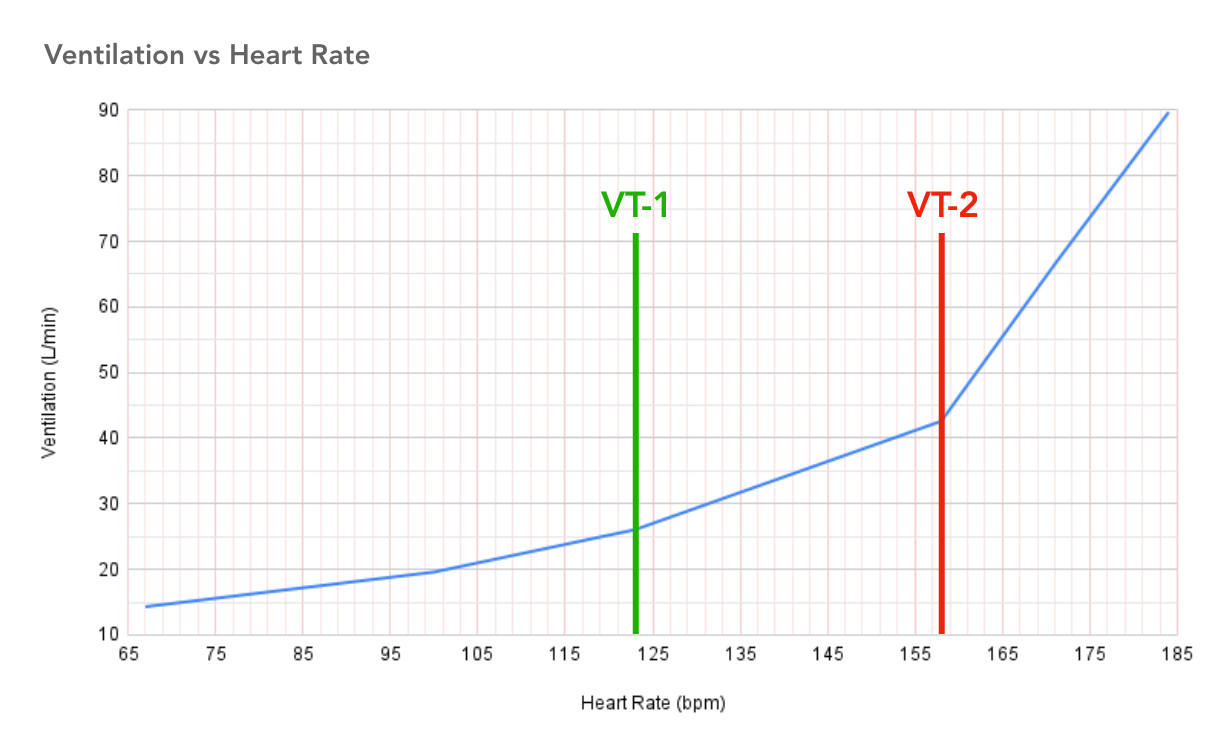With all this reading, thinking, and writing about energy systems and training zones, I scheduled a VO2 and blood lactate test at the University of Montana’s Human Performance Lab (HPL).
A VO2 test measures the maximum amount of oxygen a person can utilize during exercise. This measurement is considered the best indicator of cardiovascular fitness and aerobic endurance.
During a VO2 test, you are connected to a machine that analyzes your expired air while performing a graded exercise effort on a treadmill or bike.
A blood lactate test measures the lactate level in the blood at a given time. Lactate, or lactic acid, can indicate how well a person’s body performs during exercise. The lactate threshold is the point at which, during incremental exercise, lactate builds up in the bloodstream at a higher than resting level.
Lactate testing is commonly used in sports training to determine an athlete’s level of aerobic conditioning.
Some questions I was interested in finding answers to were:
- What’s the experience like? I’ve never done a VO2/lactate test before.
- How does my VO2 compare to other men in my age bracket?
- What are my training zones based on my VO2/lactate? And how close are they to my experience and calculated zones?
The test was easy to schedule and simple in design. Amanda, who runs the HPL at UM, conducted my test. Amanda is finishing up her Master of Science in Integrative Physiology.
The first thing Amanda did was take some resting measures — blood pressure, resting heart rate, resting blood lactate, body weight, and height. Following the baseline measures, I was outfitted with a heart rate monitor, breathing tube, and nose plug.
The HPL conducts its VO2 tests using a treadmill. The test begins at a brisk but easy walk. Every three minutes, the treadmill’s inclination and speed are increased. Amanda would draw a drop of blood every increase in speed and elevation to measure lactate.
The test ended when I reached my max heart rate and could go no further.
A few days after the test, I received my report. Using the raw data, I created the graph below.

Summary of my VO2/lacate test results:
- VO2 is 52 ml/kg/m and is considered “excellent” for my age by the American College of Sports Medicine and puts me in the 95th percentile.
- Aerobic threshold (ventilatory threshold 1) is reached at a heart rate of ~128 bpm (73% MHR) and lactate of ~2 mmol/L.
- Anaerobic threshold (ventilatory threshold 2) is at a heart rate of ~158 bpm (87% MHR) and blood lactate of ~4 mmol/L.
- Max heart rate is 184 bpm.
I reached a new max heart rate of 184 bpm during the test. Before the test, my highest recorded heart rate was 180 bpm. Before that, it was 176 bpm. The new max heart rate, along with the results of the VO2 test, caused me to make some minor adjustments in my training zones.
My training is doing what it’s supposed to be doing. I have excellent VO2, and I’ve recorded personal records (PRs) in many strength lifts and benchmark workouts over the past year. And that’s without doing any deliberate Zone 2 training.
The question that now begs to be answered is, “Would adding Zone 2 training improve my fitness?”
Over the next six months, I will add one 60-90 minute Zone 2 training session to my program. And then retest my VO2 with Amanda in December. I’ll report to you the results and what I learned.
Additionally, I recruited a new training client to have their VO2/lactate tested before beginning my program. They’re planning on training 3 to 4 days a week. At the end of three months, they’re going to retest. If everything goes as planned, I’ll let you know how that went.
Go to the next article in the series
Zone 2 – Insights from Iñigo San-Millán